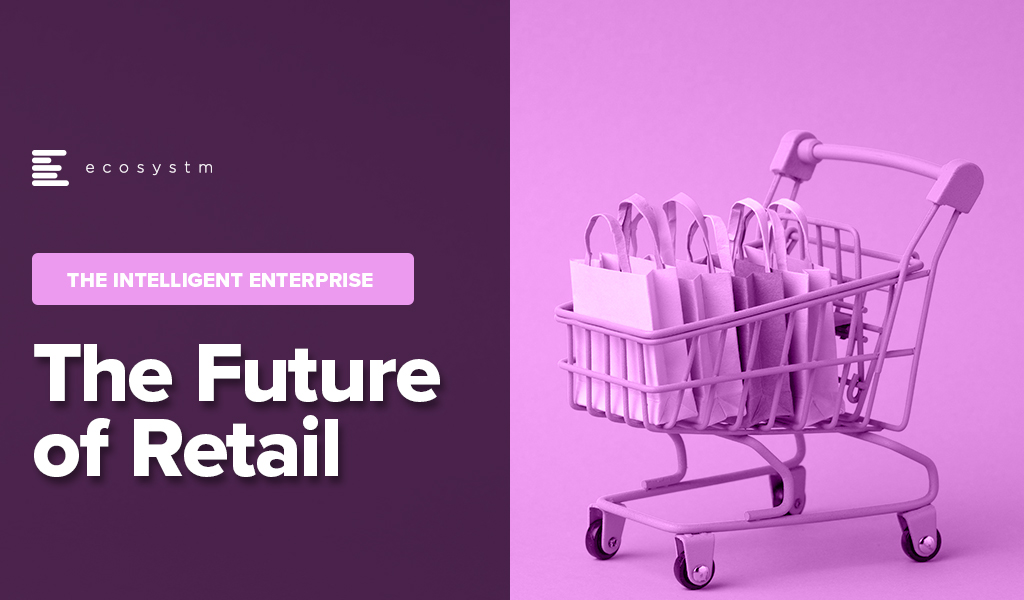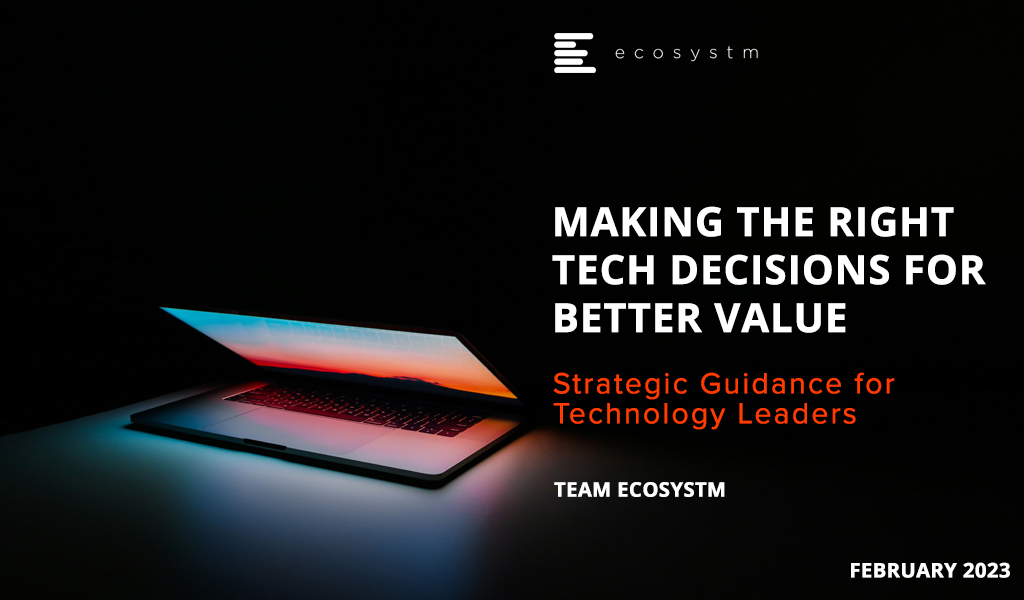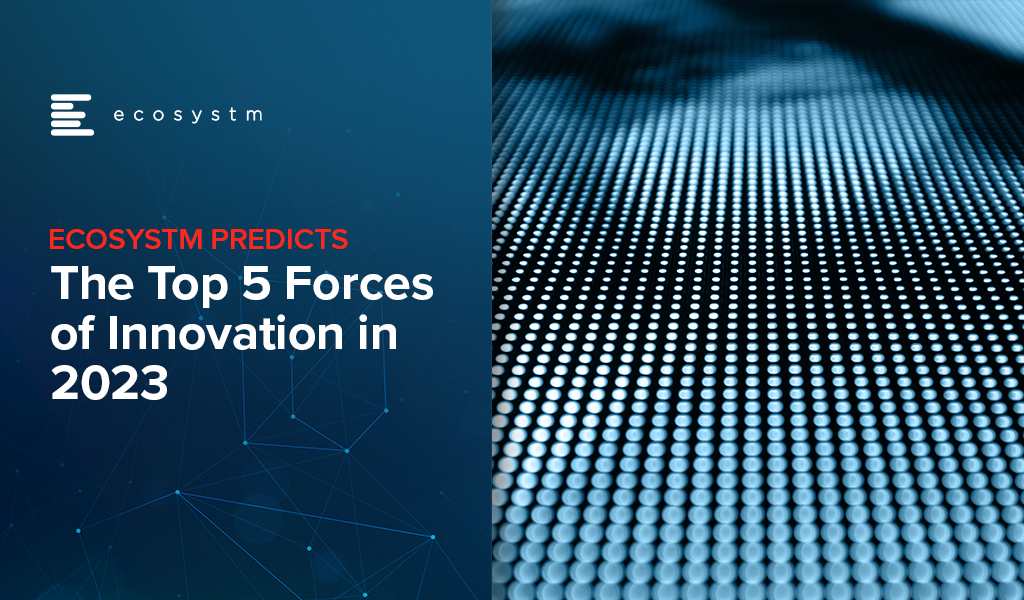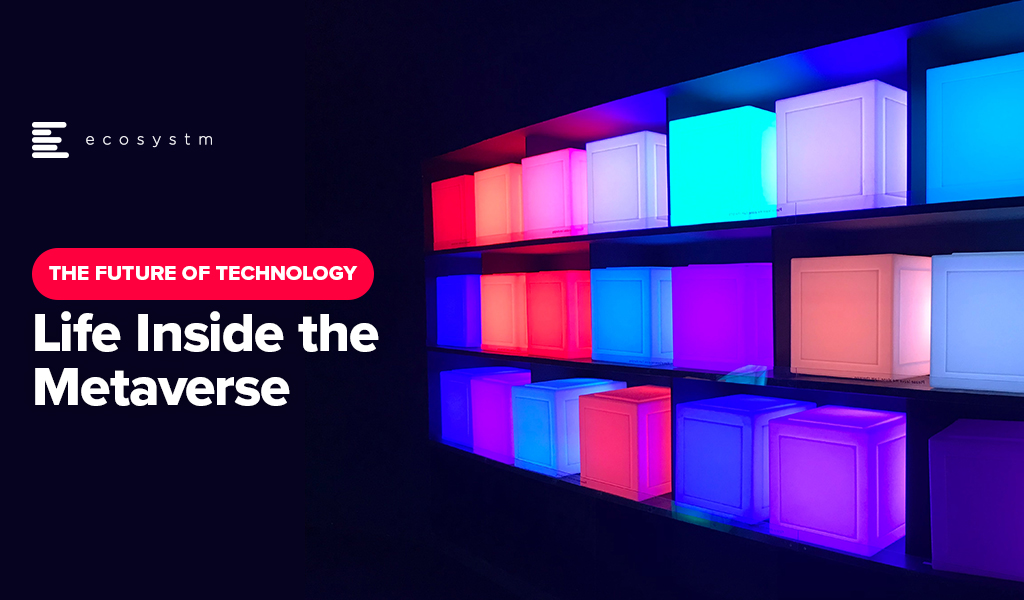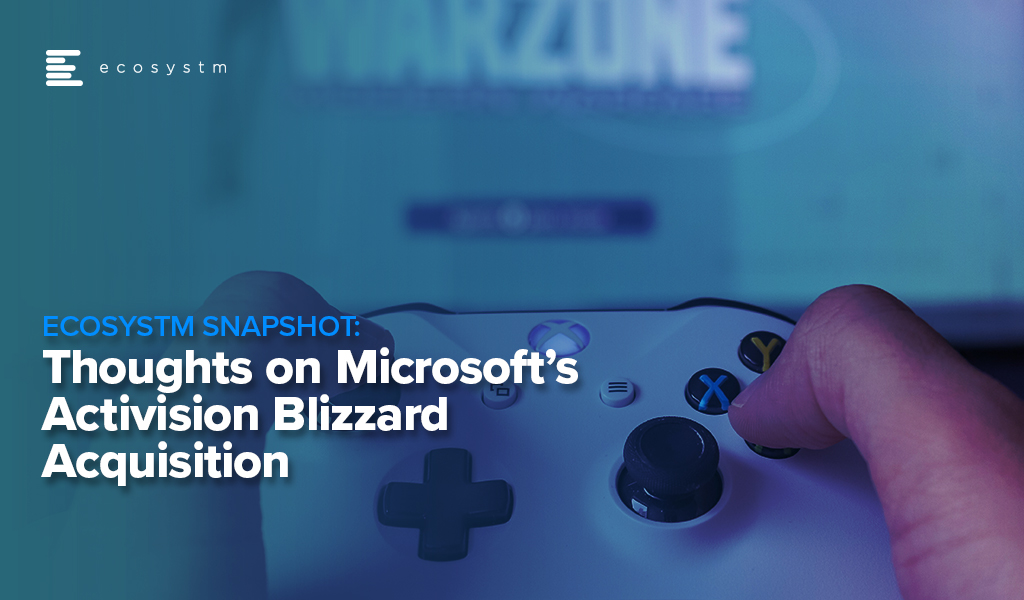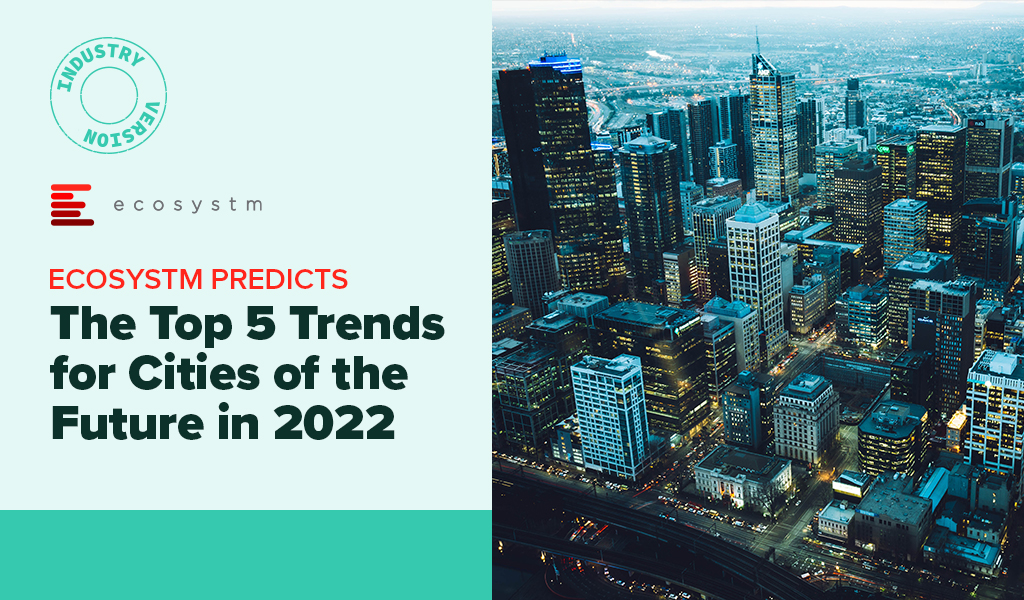The Retail industry has faced significant challenges in recent times. Retailers have had to deliver digital experiences and delivery models; navigate global supply chain disruptions; accommodate the remote work needs of their employees; and keep up with rapidly changing customer expectations. To remain competitive, many retailers have made significant investments in technology.
However, despite these investments, many retailers have struggled to create market differentiation. The need for innovation and constant evolution remains.
As retailers cope with hypersonalisation trends, supply chain vulnerabilities, and the rise of ESG consciousness, the industry is seeing several instances on innovation.
Read on to find out how brands such as Clinique, Gucci, Tommy Hilfiger, Nike, Woolworths, Prada, Levi Strauss, Mahsenei Hashuk and Instacart are using emerging technologies such as the Metaverse and Generative AI to create the much-needed market edge.
Download “The Future of Retail” as a PDF

Organisations are uncertain about how 2023 will shape up for them, amidst concerns about recessions, supply chain uncertainties, continued geopolitical volatility, energy crisis, and labour disruptions. At the same time, they have to continue to evolve their products and services, the customer experiences they deliver, and overall brand image.
If you are a tech leader, your first instinct would be to cut down on technology spend to align with your organisation’s cost optimisation strategy. And that is where you would make the first mistake – this is the time to invest in the right technologies to help your organisation face the uncertainties with agility.
Here are 5 things that you should keep in mind when shaping your organisation’s tech landscape in 2023.
- Focus on the shortest time to value. Choose a few smart digital improvements that are aligned with the strategic goals of the business and deliver value quickly.
- Drive better corporate outcomes through Sustainability programs. The transition to smart and sustainable digital assets and infrastructure should be a top priority for today’s technology leaders.
- Build resilience by improving value chain visibility. Digital technologies will continue to play an important role in providing visibility and insights across the value chains for risk management and resilience.
- Treat location data as a feedstock for AI & Automation. With the increasing importance of automation, especially to contemporary service models like digital twins and metaverse, incorporating spatial and location data into your strategy is essential for staying ahead of the competition and driving meaningful business outcomes.
- Find allies against cyber adversaries. Join the cybersecurity communities that exist in your geography and industry. Participate openly as possible so that lessons are shared quickly and widely. Don’t try to defeat the flood on your own.
Read on to find more.
Download Making the Right Tech Decisions for Better Value as a PDF

2022 was a year of consolidation – of business strategy, people policy, tech infrastructure, and applications. In 2023, despite the economic uncertainties, organisations will push forward in their tech investments on selected areas, with innovation as their primary focus. Successful businesses today realise that they are operating in a “disrupt or be disrupted” environment.
Here are the top 5 forces of innovation in 2023 according to Ecosystm analysts, Alan Hesketh, Alea Fairchild, Peter Carr, and Tim Sheedy and Ecosystm CEO Ullrich Loeffler.
- The Gen Z Tsunami will force organisations to truly embrace the 21st century.
- “Big Ticket Innovation” will get back on the agenda.
- Over the Edge: The Metaverse ecosystem will take shape.
- Green Computing will drive tech investments.
- Organisations will harness existing tech to innovate.
Read on for more details.
Download Ecosystm Predicts: The Top 5 Forces of Innovation in 2023 as a PDF

While the concept of the Metaverse can be complex and confusing, it is not hard to imagine the benefits it will bring to an enterprise. In Applying the Metaverse to the Enterprise, I talked about how a Metaverse is nothing more than real life in digital form. Let us now look at what life inside a Metaverse will look like.
The 4 Key Capabilities of the Metaverse
A Metaverse will allow for individual validation within a corporate environment through the association of four key capabilities:
Digital Built Environment. The digital built environment is the representation of the physical surroundings that provide the setting for human activity. A Metaverse provides a powerful, online, 3-D and 4-D representation of the physical workplace.
Interaction. Inhabitants of a Metaverse are known as avatars or residents. They can be representatives of staff or customers; and personalise an individuals’ interaction with the information being sought.
Navigation. Natural search occurs when the capability exists to spatially move an avatar through a digital environment. Today, the power of spatial search is self-evident and highlighted through applications such as Google Maps.
Collaboration. Social and information networks are created when two or more parties can openly and freely exchange information. They are also the basis of contemporary, decentralised digital economics (e.g., blockchain). Organisations are increasingly moving to incorporate emerging social technologies into traditional collaboration environments for decades.
The choice of a Metaverse would seem obvious for large organisations looking to move away from a process view of information. Building or construction analogies are already used to deal with the abstraction of information within their complex physical environments. It is, for example, a key principle of enterprise architecture. As a result, the decision to utilise a metaverse as a channel is ultimately not a big call.
The Metaverse will Require a Paradigm Shift
As a presentation layer, a Metaverse makes navigation and discovery easier and more intuitive. Adopting this new approach would allow a completely social and familiar way to interact with information. It would provide organisational benefits beyond the current capabilities of traditional data and process-driven environments and become the catalyst for major differences in the treatment of enterprise information. The interactive context of a Metaverse will also require differences in the way information is expressed.
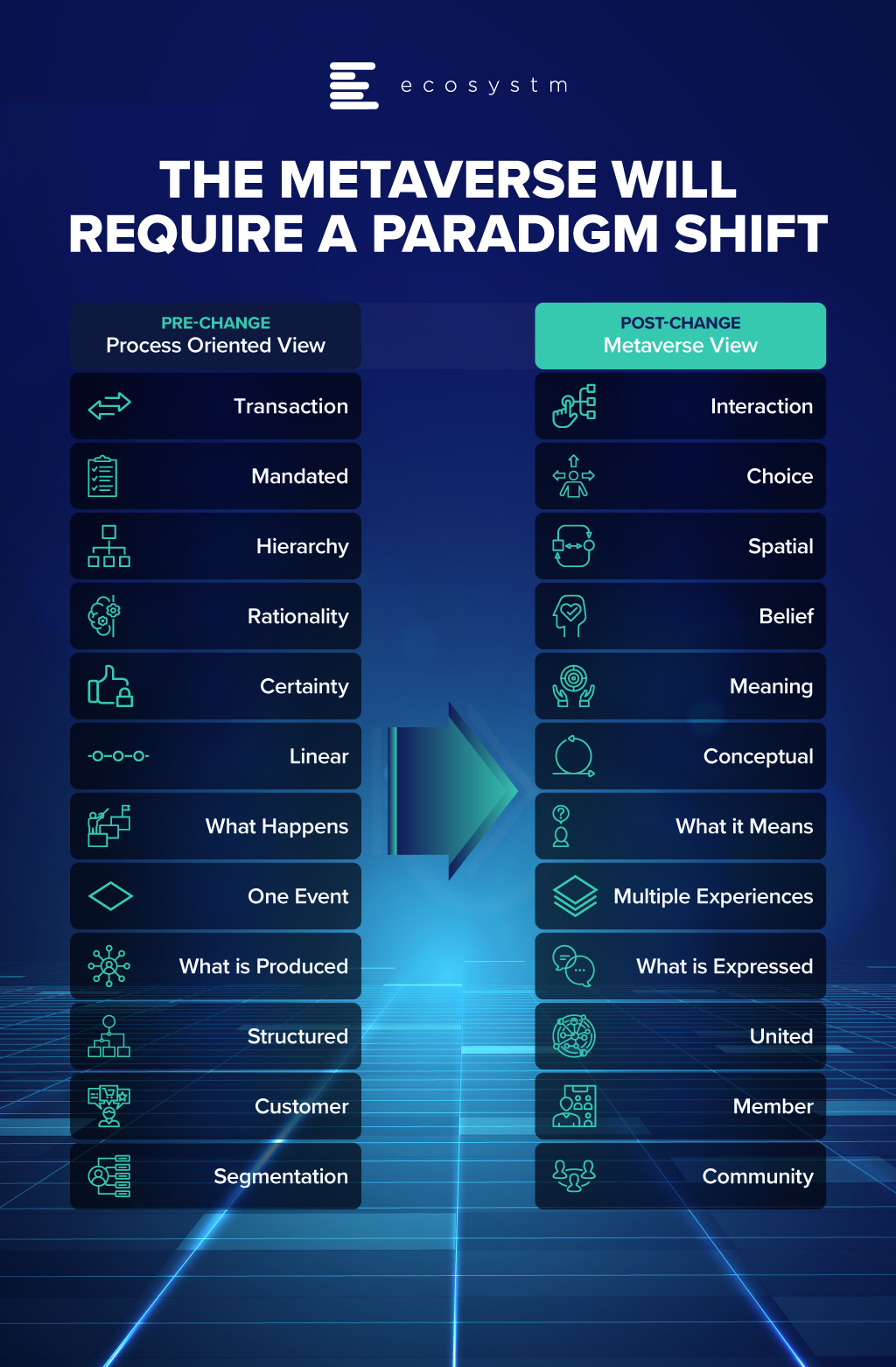
Although the tech industry is strewn with concepts of “exchange” and “collaboration”, such terms are really actions that occur after an audience has engaged with the content. The Metaverse approach potentially addresses this challenge by first getting users comfortable with their environment before encouraging them to interact in it with others. Using these differences as key drivers, the creation of a Metaverse can focus on delivering a platform for personalised information discovery, specific to the responsibilities and opportunities for individuals within an organisation or broader ecosystem.
This is just one example of the Metaverse and enterprise. There are many others. For example, think about fully integrated asset management platforms used by retail property groups or airport corporations. The Metaverse will now allow these organisations to commercialise their full physical retail assets in a digital metaverse by offering tenants both a physical store and a digital store. Or even offer the digital space to a whole new portfolio of different tenants. The commercial upside of such models is significant and sure to drive investment.
Overcoming the challenges of introducing a new information delivery channel seems like a difficult transformation choice today. Ultimately, this is the transition choice of Web 3.0. It is one that acknowledges that existing process-oriented channels will fail to meet the primary drivers and demands underpinning the growth of the new Web 3.0 world: individualism, personalisation, and decentralisation.
Yes, virtual reality environments are a super-appealing channel because of their immediate visual gratification, but behind that façade, the monetisation of physical, commercial data and the continual rise of infonomics is what it is all about.

The Metaverse is the latest in a long line of social computing capabilities to have emerged over the past 20 years. Each of the technologies has brought with it key changes to customer and staff behaviours and influenced the portfolios of traditional corporate business systems. In the modern world, Enterprise Resource Planning (ERP), websites and their Content Management Systems (CMS,) and Customer Relationship Management (CRM) are no longer sufficient. Forward-looking enterprises can’t ignore the need to assess the key impacts of next-generation social computing platforms as they strive to embrace a Web 3.0 presence through optimised internets, digital distribution channels and numerous online marketplaces. The Metaverse is deserving of some consideration in this assessment.
The Need for Perspective in Chaos
Attracting and retaining top talent is a key goal for any large enterprise because people drive the ultimate success of every organisation. In the more buoyant economies, more work is driving the need for more workers! Competition for resources is intense and most industries, including Government, are now experiencing the challenges inherent to a tight labour market. This in turn is continuing to fan the flames of digital and cultural transformation programs as CEOs and their leadership teams reposition for relevance.
I recall one such transformation program in a client organisation from a few years ago. It started, as they do, with a sweeping internal review of customer relationships, service delivery performances, product portfolios, service capabilities, competitors, organisational culture, and skills. It was to spearhead a program of transformation underpinned by a new labour force, unified in its desire to meet every need of their clients. Its brave and remarkable outcome was identifying and accepting that the role of the “individual” inside the organisation would be the number one catalyst for future success in dealing with everything outside it: employee experience driving the customer experience.
On reflection, it is not hard to see how individuals lose their way inside large organisations. Over time, as staff numbers increase to support growth in customers and projects, complexity starts to bleed across the business and into the culture. At a time when better communication and more access to information has become more important than ever, these attributes have become even harder to find. And not just any information; information that is relevant to the individual and specific to their role; that is critical to providing perspective within the chaos. Enter the Metaverse.
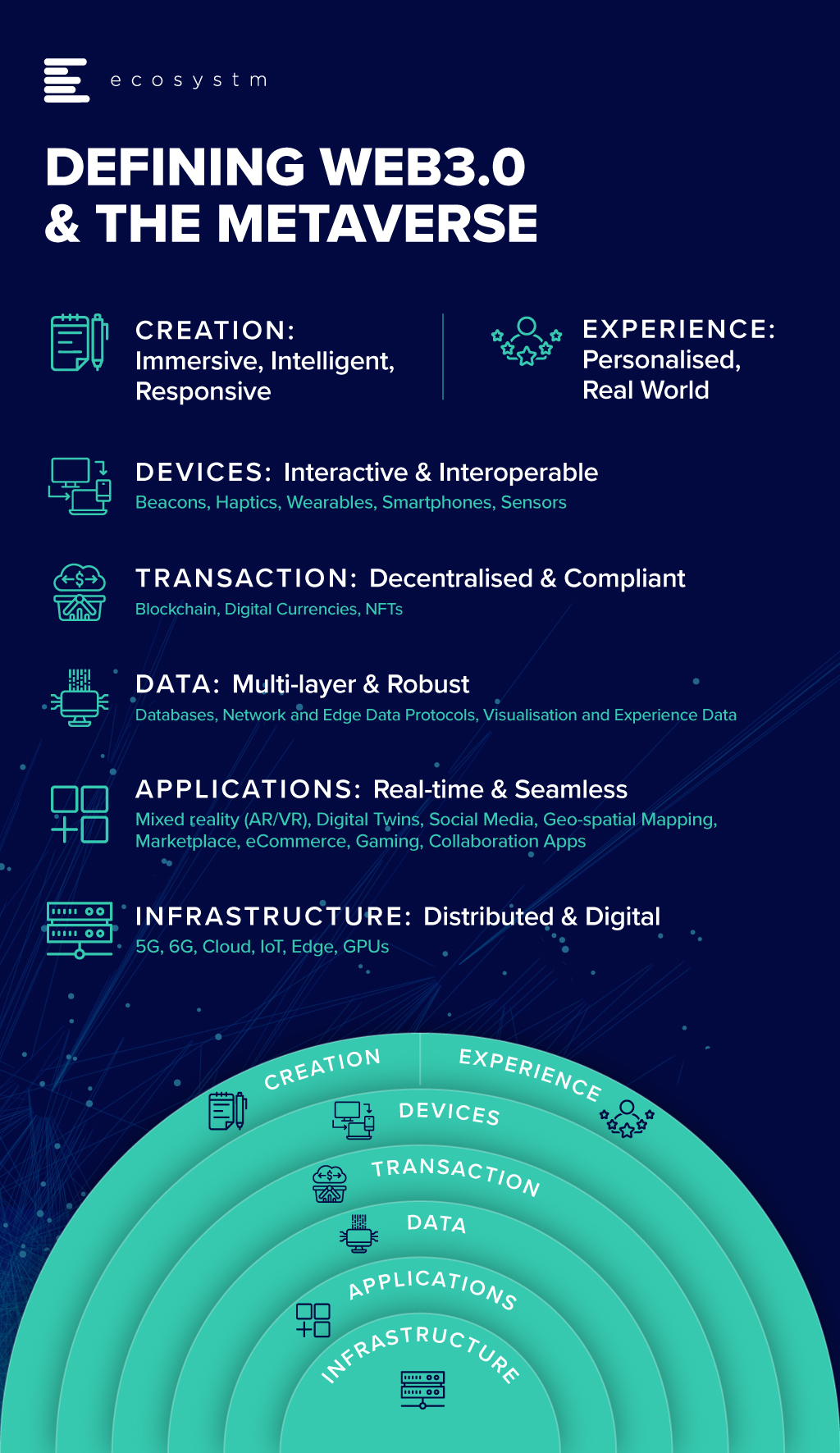
What is the Metaverse for an Enterprise?
The Metaverse is everything we simultaneously love and loathe about technology. But what an opportunity! The ability to reinvent. To embrace. To transform. But also, a gilded Parthenon of extraversion and Silicon Valley excess. Yet another mirror of some contrived reality. Another step away from a simpler, more wholesome time.
Let’s all calm down. When applied to the enterprise, a Metaverse is nothing more than real life in digital form. It provides a platform capable of:
- Developing a virtual representation of an organisation, its structures, and objectives,
- Visually representing complex concepts to allow contextual interpretation by an audience,
- Encouraging excitement and enjoyment from experiencing old information in new ways,
- Giving the user a sense that it’s all about them (literally placing them at the centre), and
- Delivering an environment that provides the opportunity to integrate with existing and emerging tools.
In the context of that transformation program from many years ago, in most large organisations the information that employees need to feel valued and add value does exist but is largely inaccessible or resides in fragmented islands of data. This is because, forged through decades of compliance, the organisational view of information within companies is process-oriented. Most databases are unpopular. Most intranets are over-populated and under-utilised.
Achieving a desired cultural outcome (that recognises the individual as the number one catalyst for future success) necessitates that this process-oriented model changes to a more individual, highly contextualised, and information-driven view. Maybe even a unified collaborative data hub with a unique presentation layer. Maybe even a Metaverse!
In my next insight, I’ll share a glimpse of how life inside a Metaverse will look like for an enterprise.

Microsoft announced their intentions to acquire Activision Blizzard for USD 68.7 billion, creating quite a buzz in the Gaming and tech industry. The acquisition is set to be completed in 2023 and according to Microsoft is well set to fuel “growth in Microsoft’s gaming business across mobile, PC, console and cloud and will provide building blocks for the metaverse.”
There have been a few animated discussions at Ecosystm on Microsoft’s potential monopoly in the Gaming industry, whether it is aligned to their ‘Metaverse plans’ and the challenges that Microsoft is likely to face with the acquisition. Here is what our experts have to say.
Impact on the Gaming Industry

Activision Blizzard is the publisher of some of the most popular games around – loved by both hardcore and casual gamers. The acquisition of franchises such as Call of Duty, Overwatch, Warcraft and Diablo – as well as mobile games like Candy Crush and Hearthstone – demonstrates Microsoft’s commitment to what is now the largest medium of entertainment.
Microsoft is clearly focusing on growing their software revenue. But most importantly, they will be able to integrate these popular titles within Game Pass. This allows them to compete more actively with Steam and Epic Games Store but as a subscription-based model. The Game Pass model has proven extremely popular with gamers (with approximately 25 million gamers spending USD 10 per month to subscribe to the service), so this will continue to bolster their market position and increase users and revenue.
The latest Xbox Series X/S are the fastest-selling Xboxes ever – even with chip shortages and logistics challenges. The majority of Microsoft’s gaming revenue comes from hardware now. This acquisition will inevitably drive hardware growth, as well as increase gaming software revenue from both a subscription on Game Pass as well as outright purchases.
Microsoft’s Bigger Play

Microsoft made a great start by acquiring key titles like Doom in 2020. The go-to-market strategy through subscriptions and gaming as a cloud service is well managed. Last year when Microsoft relaunched Flight Simulator, the Ecosystm review spoke of how Microsoft wanted to be the “Netflix of Gaming”. They just fired another big shot in that battle by announcing their intention to acquire Activision. With a USD 69 billion price tag, it is probably more of a ballistic missile than a shot!
There has been a lot of conversation (including at Ecosystm!) on how this acquisition makes sense. Microsoft’s revenue from gaming sales is said to be USD 11.5 billion on an annualised basis – and Activision’s revenue is estimated to be USD 7.7 billion. The combination will obviously be huge, but is it worth so much? It is!
The reason for that is today’s leading buzzword – the Metaverse. As people live more of their lives in an online world and interact more with their peers online, being a leader in that “universe” is the key to the future. The Metaverse occupies the spaces of work, play and socialisation which have all gone increasingly virtual.
For Microsoft, this really translates into how relevant their cloud is to the Metaverse. This is a world where one can play using Game Pass, work on Office 365 and store everything on OneDrive. This pervasiveness is key to Microsoft’s consumer strategy. On the enterprise side, they have a dominant share, especially with Office 365. This will see them gaining strength in the consumer business.
Challenges for Microsoft

What a bargain for Microsoft! When Microsoft made the USD 95 per share offer this week Activision’s market value was about USD 51 billion. While the premium that they are offering was almost 50% of the share market close on the previous trading day, they are getting market-leading content for about 10% less than what Activision was worth in February 2021. A year in which the pandemic continued to increase demand for online gaming.
However, this leaves Microsoft with three significant challenges.
First, they have to get regulatory approval in the different markets in which the two companies operate. Microsoft has advised they expect the deal to close in late 2023, so it looks like they are expecting some interesting discussions over the next few months. This acquisition is a significant consolidation of the Gaming market, so regulators will look at the deal closely.
In addition, regulators will also look closely at the privacy implications, with Microsoft gaining access to millions of gamers’ personal details to add to the personal information they already hold from their other divisions.
Second, they have the challenge of addressing the sexual harassment issues that caused the drop in Activision’s market value. There are court settlements under appeal, and reports talk about 40 people leaving Activision since July. Integrating the large teams into Microsoft will need careful attention.
Third, retaining the talent in Activision may be a challenge for Microsoft as I would expect their competition to be actively approaching Activision’s key creatives.
Unless these challenges are handled well, the company they bid on may not be the company they acquire.
Cities worldwide have been facing unexpected challenges since 2020 – and 2022 will see them continue to struggle with the after-effects of COVID-19. However, there is one thing that governments have learnt during this ongoing crisis – technology is not the only aspect of a Cities of the Future initiative. Besides technology, Cities of the Future will start revisiting organisational and institutional structures, prioritise goals, and design and deploy an architecture with data as its foundation.
Cities of the Future will focus on being:
- Safe. Driven by the ongoing healthcare crisis
- Secure. Driven by the multiple cyber attacks on critical infrastructure
- Sustainable. Driven by citizen consciousness and global efforts such as the COP26
- Smart. Driven by the need to be agile to face future uncertainties
Read on to find out what Ecosystm Advisors, Peter Carr, Randeep Sudan, Sash Mukherjee and Tim Sheedy think will be the leading Cities of the Future trends for 2022.
Click here to download Ecosystm Predicts: The Top 5 Trends for Cities of the Future in 2022



